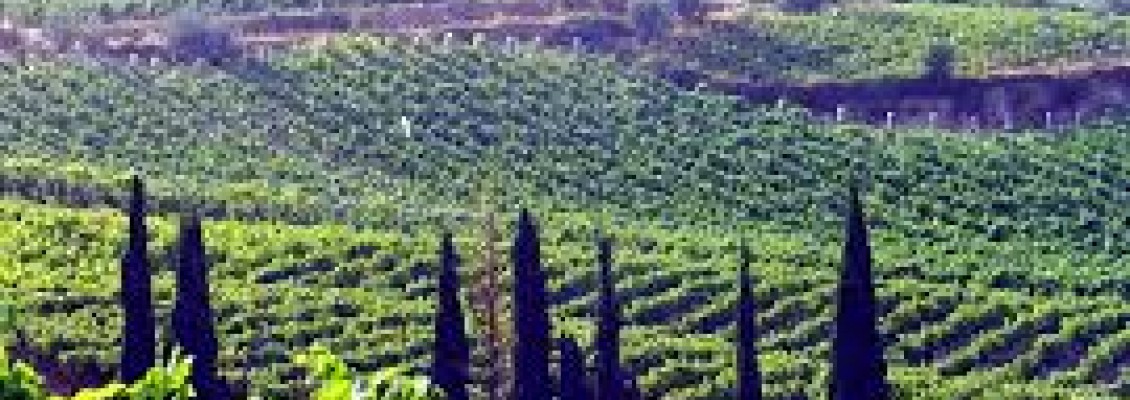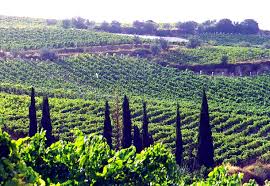Tasting with the Master: #1 Agiorgitiko

 If you love wine and the enjoyment that it can generously and
If you love wine and the enjoyment that it can generously and
without great effort or thought offer,
then a wine from Agiorgitiko grape variety would be the perfect choice.
You must be wondering what the explanation is.
Simple! It has the charming combination of expressing a fruity aromatic profile while tannins and acid are to the moderate side. It ticks all the boxes in other words without having any structural element on the edge.
And these are exactly the characteristics of the crowd pleaser wines, similar to those that are generally produced from Merlot, Tempranillo even Grenache, Dolcetto or Malbec in Argentina. All with some assumptions and under certain conditions of course because no variety produces a single wine style or quality exclusively.
Thus the wines produced by Agiorgitiko are usually like blockbuster movies, with high viewings and resonance, without excluding, of course, a more artistic approach. If they had a director I believe that the most fitting would be Steven Spielberg, the only filmmaker that has at least three movies in the top 10 of all-time blockbuster films. Followed by everyone else.
Having said that, Agiorgitiko has a lot more to deliver and can definitely rise to higher quality standards apart from the everyday delights!
Certainly it has its secrets. As a fruity variety, Agiorgitiko, does not like a high proportion of new oak because it hides its wonderful aromatic dimension, for the same reasons that it does not need prolonged extractions and being handled like Cabernet Sauvignon. It is a softer, more delicate and elegant variety. The challenges are many of course and in the vineyard maybe even more.
The big challenge there - that probably applies to most reds in our country but also to several whites - is to produce wines with concentration but without a heavy or overripe character. That would be muscular, but also light in their feet. It is a not easy task but this is what it is all about. Who wants to drink another alcoholic bomb with new American oak?
The general characteristics of the variety include a wonderful extroverted fruity character scented with strawberries and cherries. It is followed by a juicy palate. In high level of ripeness, the fruit can become darker while the taste is velvety and hedonistic with supple tannins that caress your tongue.
That said as generalization. To better understand the expressions of Agiorgitiko, I chose three wines from the Greece and Grapes collection in three different styles that I tasted in order to describe exactly their profile. You are welcome to try them and would love to have your opinion.
- Estate Mitravelas - Red in Black (Fruity style without any oak influence)
Color: Medium intensity, ruby red
Nose: Moderate intensity
Fruity (red cherries red, raspberries)
Spicy (cinnamon and nutmeg)
Vegetal notes of grass
Palate: Soft, charming and delicious. To be consumed over the next 1-2 years.
- Estate Palivos - Nemea 2015 (Classic Nemea matured in oak for 12 months, 30% new oak)
Color: Medium intensity, ruby red
Nose: Moderate to high intensity with well integrated oak.
Fruity (black cherry, ripe strawberry)
Oak aromas (chocolate milk, nuts).
Palate: Hedonistic and concentrated with noticeable but not intrusive tannins and medium weight. Acidity provides energy and refreshes.
Consumption over the next 3-4 years.
- Estate Tselepos - Dryope Reserve 2014 (Premium Nemea with long extraction and matured in new oak)
Color: Deep ruby
Nose: High intensity with the oak manifesting its presence.
Fruity (plum, black berry)
Floral (violet)
Oak aromas (chocolate cake, smoky).
Palate: Robust wine with exceptional quality fruit that starts gently and sweet while showing its tannin strength in the finish.
Consumption over the next 6-8 years.
The X-ray of the variety
Name: Agiorgitiko, Black of Nemea
Area: 3.830 hectares mainly in Nemea (nearly 2.500 ha) and secondarily across mainland Greece (Kavala, Drama, Attiki)
Viticultural Characteristics: Late ripening variety that ripens from mid-September onwards. Prone to fungal diseases possessing thick bunches with medium sized berries. Productive variety that loves poor soils. The ongoing clonal selection presents 6 clones so far with the one already commercially available.
Style/Terroirs: Rose wines with tension and minerality from the Asprokabos region, reds that can range from fruity to structured styles with the specific terroirs starting making their statements (Koutsi, Leontio, Gymno, Asprokampos, Xirokampos, Ancient Nemea and Ancient Kleonai, amongst others). A few but interesting dessert wines.
Costs: From 5 to about 60 euros.
Food pairing: Ideal with hare or lamb stew but will greatly pair with a variety of dishes from sausages and soft cheeses to more complex dishes.